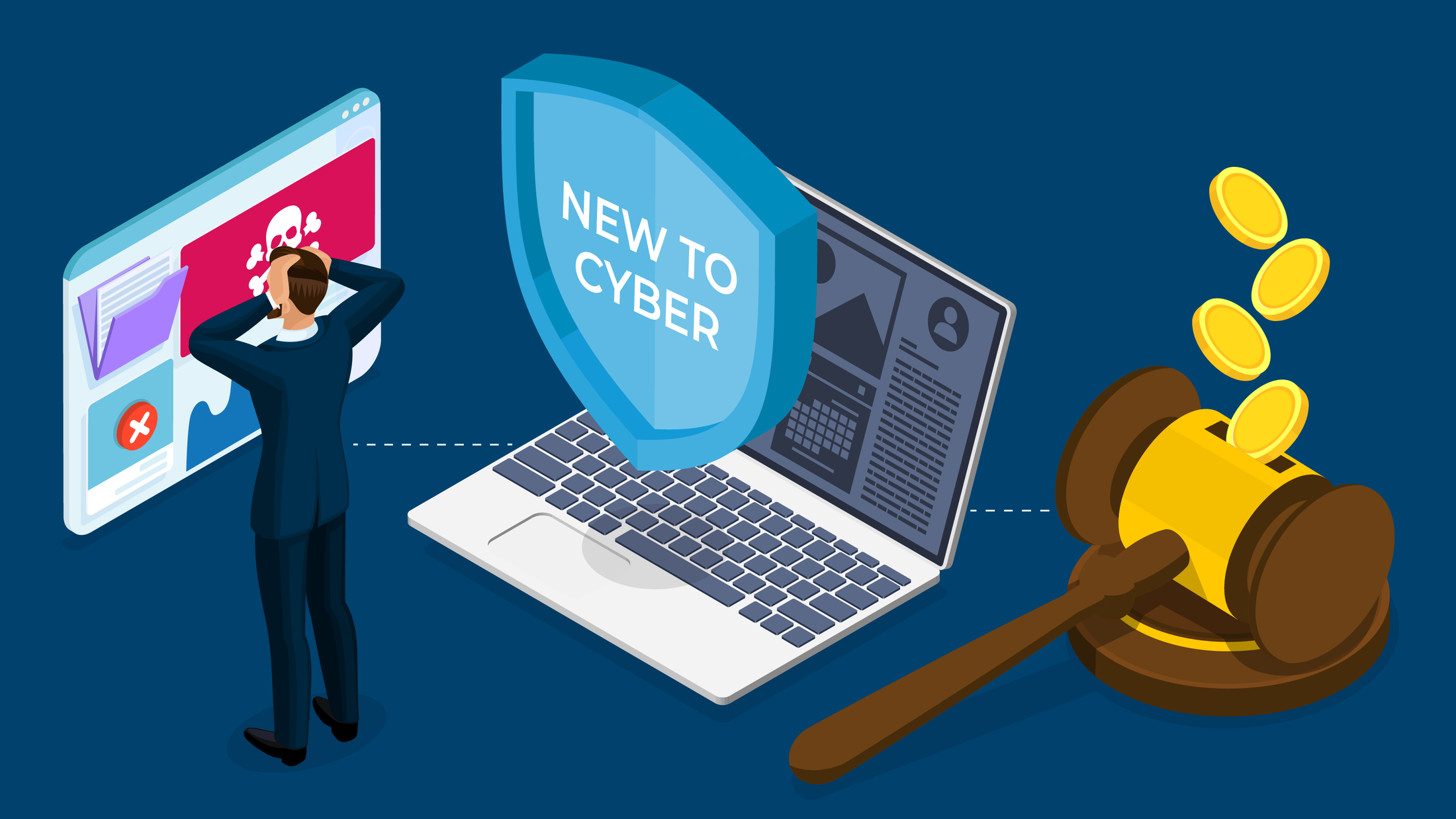What is cyber risk?
‘Cyber risk’, also known as a cyber exposure, is the probability of a cyber event impacting a business’s technology systems, potentially leading to financial loss, operational disruption, system damage and reputational harm.
The evolution of cyber risk
As businesses increasingly depend on technology to operate, the digital assets they hold—including business data, corporate information and confidential client records—become more valuable and vulnerable. This is what we mean by cyber risk: the possibility that a cyber event can disrupt and even destroy these digital assets, resulting in different forms of financial loss.
It’s common for cyber risk to be associated with data privacy and the risk of data breaches. But that’s just the start. Today, there’s also a significant risk of cyber extortion, data exfiltration and business interruption, as cybercriminals target businesses across industries, using sophisticated techniques to extort money and cause business operations to grind to a halt.
Cyber risk vs. cyber attacks
So how does a cyber risk differ from a cyber attack? It helps to think of a building and potential fire damage. Cyber risk is the chance your building could catch fire, while a cyber attack is the fire itself.
Every business has a cyber risk, which cybercriminals look to exploit by launching cyber attacks. These threat actors are constantly evolving their techniques, all to breach defences, commit cybercrime and extort the victim. Ransomware is something of a household name, but there are lesser-known tactics like social engineering that pose as big a threat.
Thankfully, there’s a simple way to defend against risk in cyber. By adopting strong cyber risk management practices—including thorough cyber security hygiene, employee education and proactive cyber attack prevention—you’ll build cyber resilience and go from a vulnerable target to a protected entity.
Top cyber risks businesses need to be aware of
Cyber extortion and ransomware
One of the fastest growing forms of cybercrime, cyber extortion occurs when cybercriminals deploy a cyber attack such as phishing. Here, a malicious link is embedded in the email. When clicked, the link opens malware which invades the user’s computer, often crippling systems and encrypting data. On top of causing system downtime which can have a catastrophic impact on your ability to trade, the cybercriminal will also make a ransom demand in return for the encryption key.
When faced with a demand or ransom, it can be difficult to know whether you should pay it. Is the ransom a fair price? Does the cybercriminal really have you cornered? Are they a sanctioned entity? And once you pay, will they really hand over the decryption key?
Social engineering
From funds transfer fraud to business email compromise, social engineering scams have made victims of businesses ranging from building contractors to beauticians. What’s more, strong IT security controls do little to stop these attacks. They involve cybercriminals imitating a third party (such as a vendor or supplier) or senior leader within the business, via email, and tricking the victim into wiring money to the wrong bank account.
Once funds have been transferred, they’re usually deemed unrecoverable. In cases where the victim believed they were paying a third party, this is even more problematic, with the actual bill still to be paid.
When cybercriminals manage to hack into a business’s network, whether it’s via a brute force attack or an employee unwittingly handing over their details, they can gain access to any online accounting and banking platforms and start to wire money out of the victim’s account into an account they own.
To avoid the misdirection of funds, embedding strong IT controls is vital.
System damage
Whether it’s a ransomware attack or a system failing to update, cyber events have the potential to damage business data and applications.
Repairing systems is often essential in getting a business back up and running, but hiring the expertise required comes at a substantial cost.
How insurers help mitigate cyber risk
Cyber insurance: a promise to protect
Cyber insurance, also known as cyber liability insurance and cyber security insurance, is designed to protect businesses against the financial loss that results from cyber threats and exposures, by enabling businesses to effectively share their cyber risk with the insurer.
Good cyber insurance policies do more than promise to pay; they promise to protect. Always consider an insurer which offers expert incident response and business recovery services, something that many businesses working alone lack the budget to hire independently.
CFC has built the largest in-house cyber security and claims team in market, with a mission to prevent cyber incidents from happening, respond effectively when they do and get businesses back up and running quickly—all available to our policyholders at no extra charge.
Next steps
Let’s address cyber risk
In this digital-first world, leaving your cyber risk unaddressed is just too, well, risky. Cybercriminals need no invitation to deploy their nefarious tactics, and they’ll actively take advantage of any vulnerability they come across.
Of course, it’s a big ask for businesses to build the IT security that’s required to minimize cyber risk and repel cyber attacks. That’s why cyber insurance is so valuable; more than words on a piece of paper, taking out a comprehensive policy means businesses have an experienced partner looking out for them 24/7.
Get started with these tools
If you’re unsure on the level of cyber risk in your industry, check out our cyber risk heat map. It’s a great resource that helps businesses see what they’re truly facing, giving certainty in this uncertain landscape.
Find out how much a ransomware attack might set your business back with our ransomware calculator. It’ll help you and others you discuss with to understand the potential impact of an attack, so you can take steps to mediate.
Lastly, we strongly recommend reading our cyber insurance guide. Inside, you’ll learn everything you need to know about cyber risk, the role cyber insurance plays, plus helpful case studies that showcase cyber insurance in action.
Ready to talk cyber? Reach out with any questions to cybermarketing@cfc.com.


